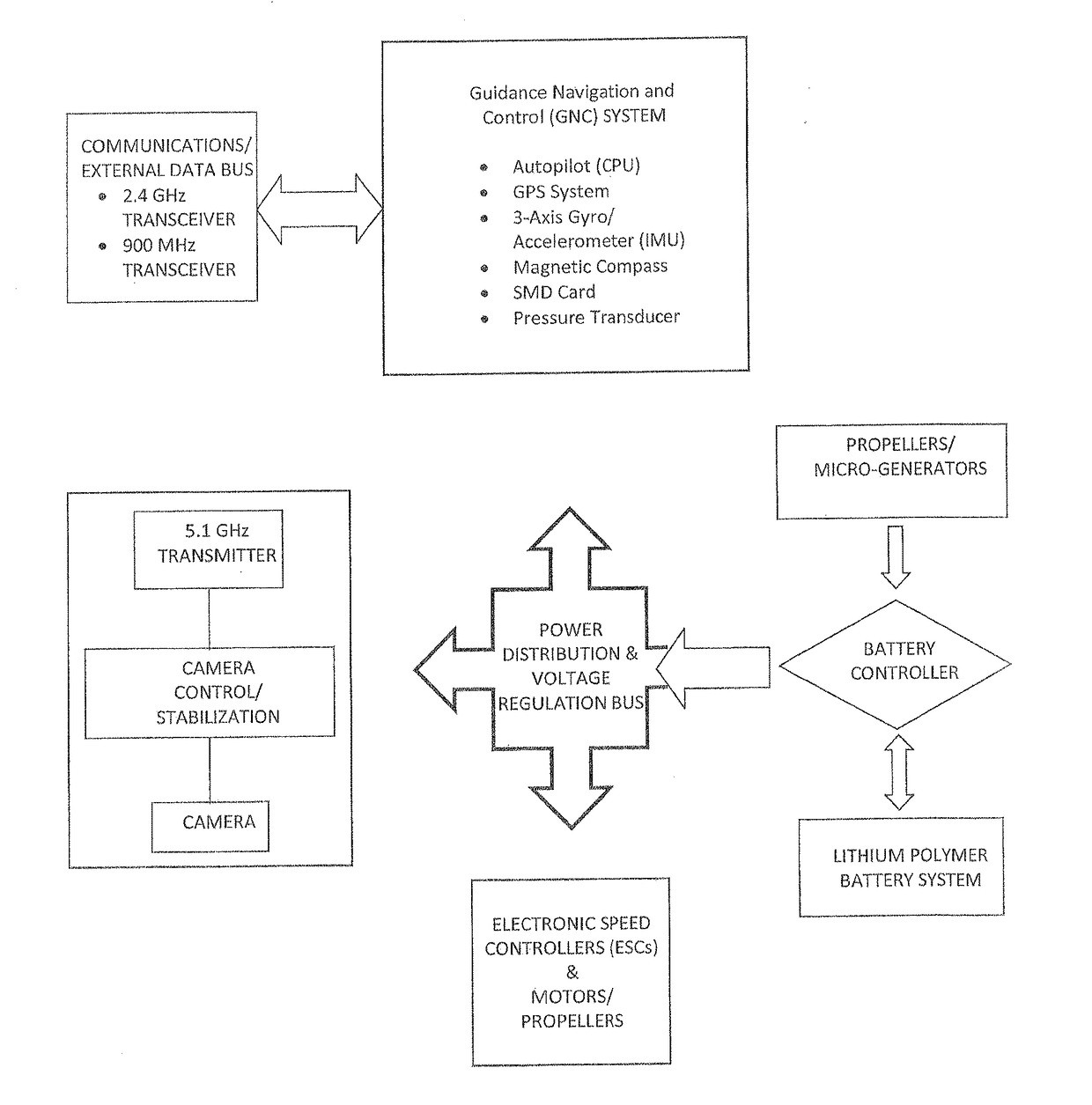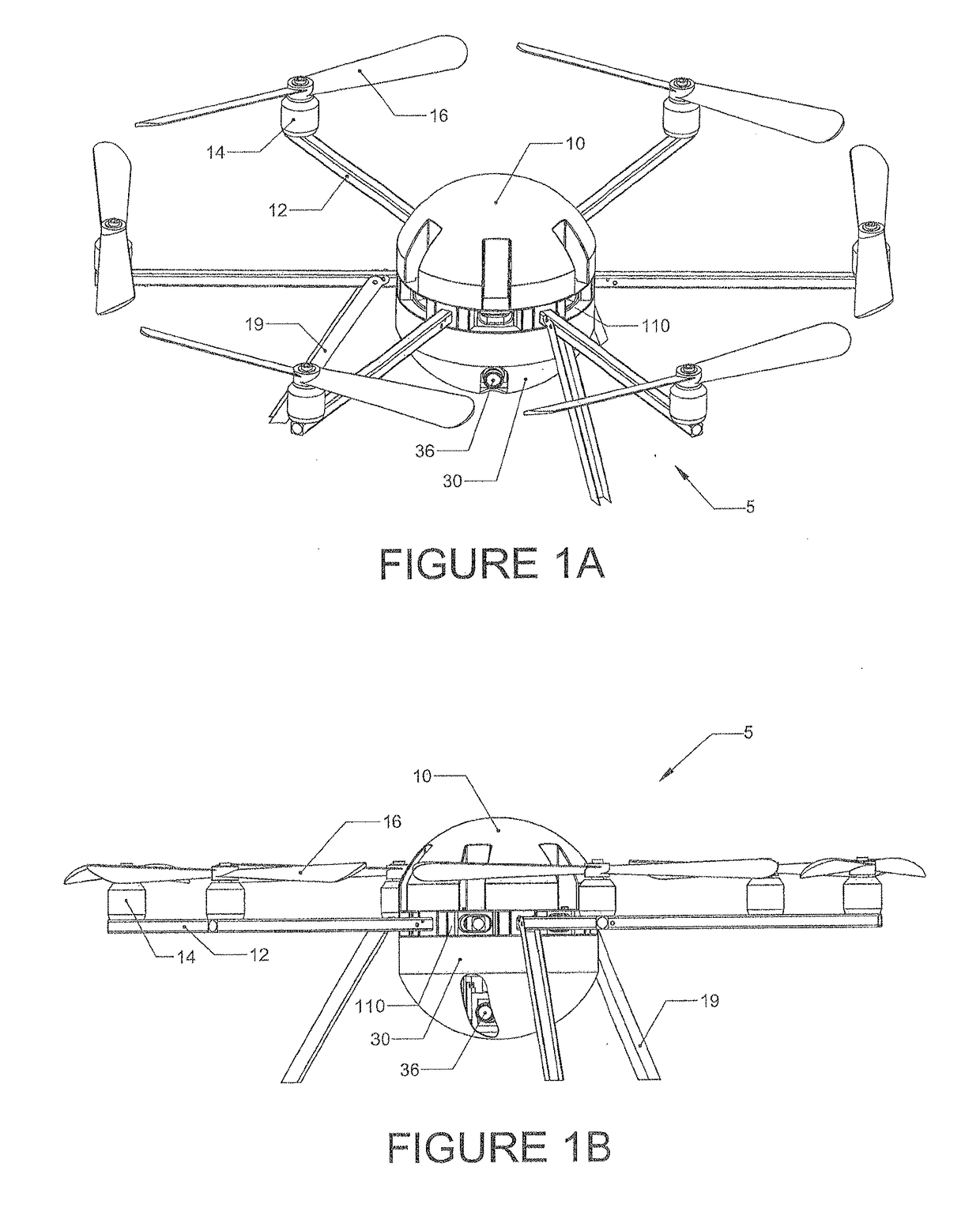Unmanned aircraft system (UAS) with active energy harvesting and power management
a technology of active energy harvesting and power management, applied in the direction of energy saving arrangements, energy efficient board measures, instruments, etc., can solve the problem of limited flight time and achieve the effect of minimizing power consumption
- Summary
- Abstract
- Description
- Claims
- Application Information
AI Technical Summary
Benefits of technology
Problems solved by technology
Method used
Image
Examples
first embodiment
[0031]In the inventive principles underlying the various inventions herein the unpowered rotors are also referred to herein as “free-wheeling propellers” and are propellers connected to the arms with no connection to micro-generators or motors, and no electronic connection to the autopilot and electronic sensors—they are literally free-wheeling. In this embodiment the aircraft can extend its stationary (aka hovering) flight time by using natural wind, convection currents, and turbulence to harvest energy from these air currents to create lift much like an eagle does in gliding from thermal updraft to updraft, or a sailplane in riding thermals and ridge waves. In one embodiment eight propellers are used on the aircraft: four powered propellers for flying from point to point and stabilizing the aircraft, and four unpowered (free-wheeling) propellers for harvesting the energy from air currents. In one embodiment, the free-wheeling propellers are mounted to a bearing shaft and are free ...
third embodiment
[0038]In a third embodiment the rotors may be stacked in layers of two or more parallel or nearly parallel planes. For example, FIG. 1A-1B shows an embodiment of the aircraft with six rotors arranged in a single plane in a spoke-and-hub arrangement. However, FIG. 1C-1D show an eight-rotor embodiment, with four rotors located on a first lower plane and connected to electric motors, and four more “free-wheeling” rotors located on a second parallel plane arranged above the first plane.
2. Defined Terms
[0039]The terms “free-wheeling propellers” and “unpowered rotors” are used interchangeably throughout this patent document. The terms “waypoint,”“destination” and “point of interest” are also used interchangeably. “Propeller” and “rotor” are also used interchangeably.
Aircraft Energy Harvesting and Power Management System
[0040]Embodiments of the invention are directed to an aircraft energy harvesting and power management system comprising a battery-powered airframe having a plurality of pow...
PUM
 Login to View More
Login to View More Abstract
Description
Claims
Application Information
 Login to View More
Login to View More - R&D
- Intellectual Property
- Life Sciences
- Materials
- Tech Scout
- Unparalleled Data Quality
- Higher Quality Content
- 60% Fewer Hallucinations
Browse by: Latest US Patents, China's latest patents, Technical Efficacy Thesaurus, Application Domain, Technology Topic, Popular Technical Reports.
© 2025 PatSnap. All rights reserved.Legal|Privacy policy|Modern Slavery Act Transparency Statement|Sitemap|About US| Contact US: help@patsnap.com



